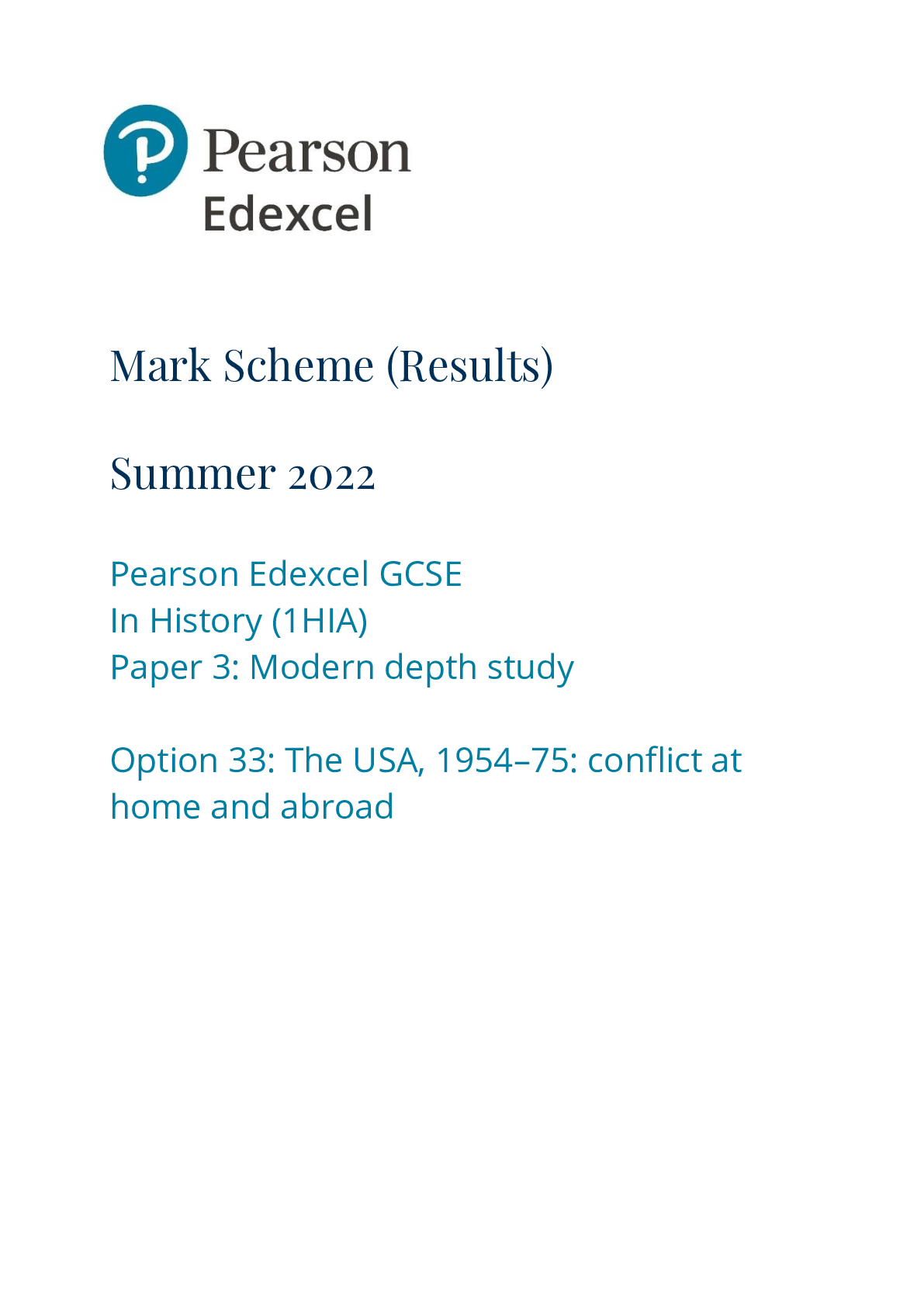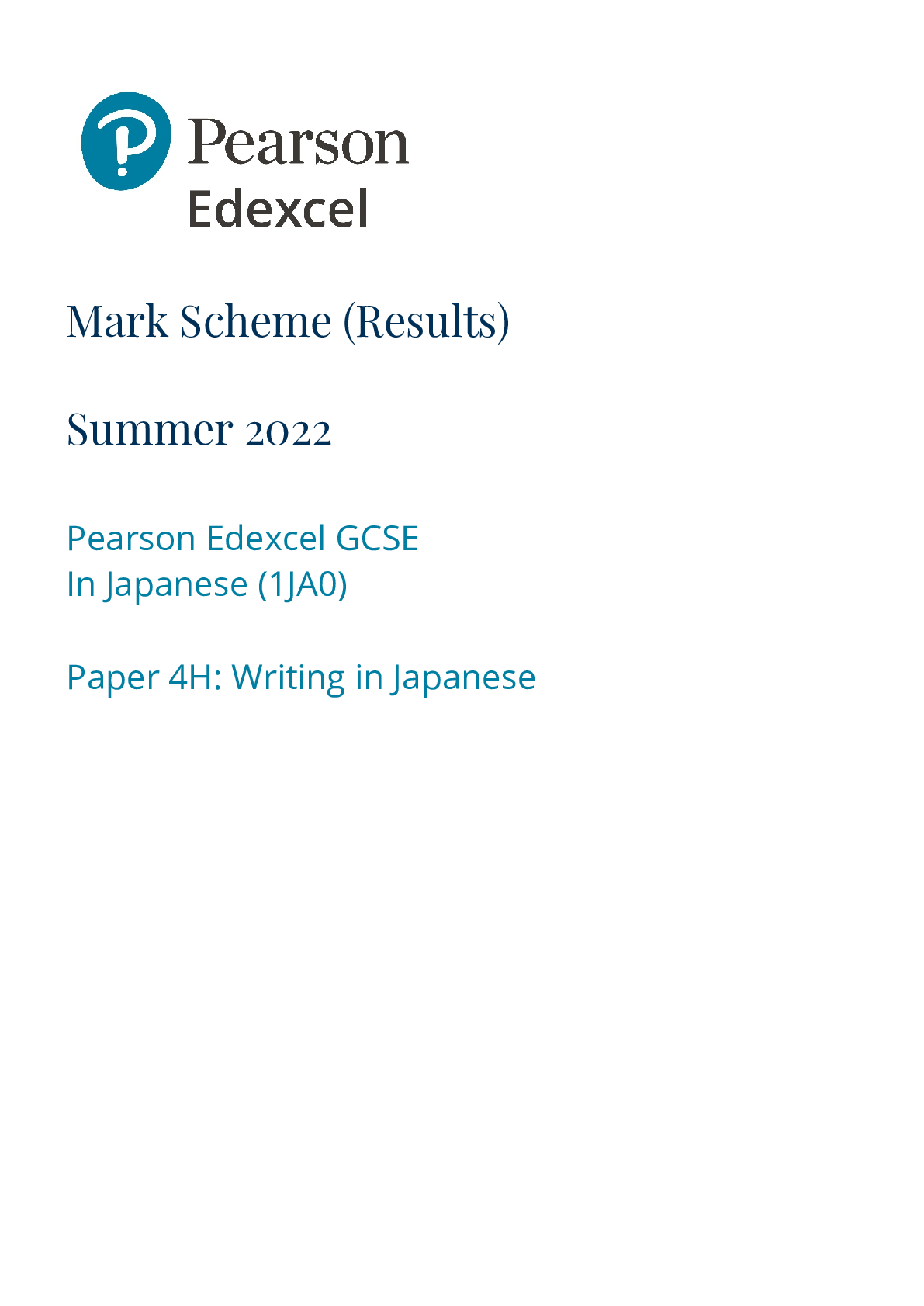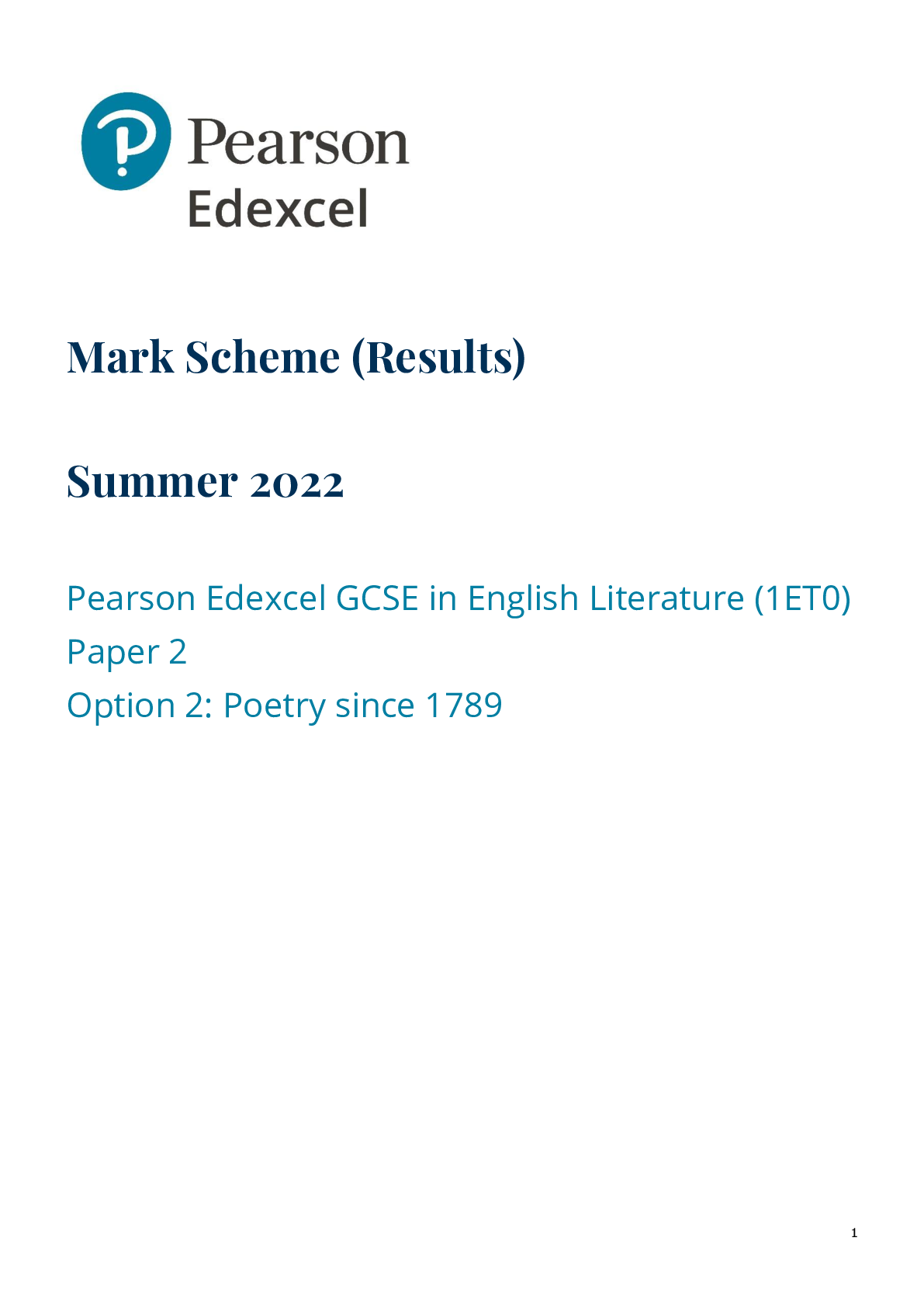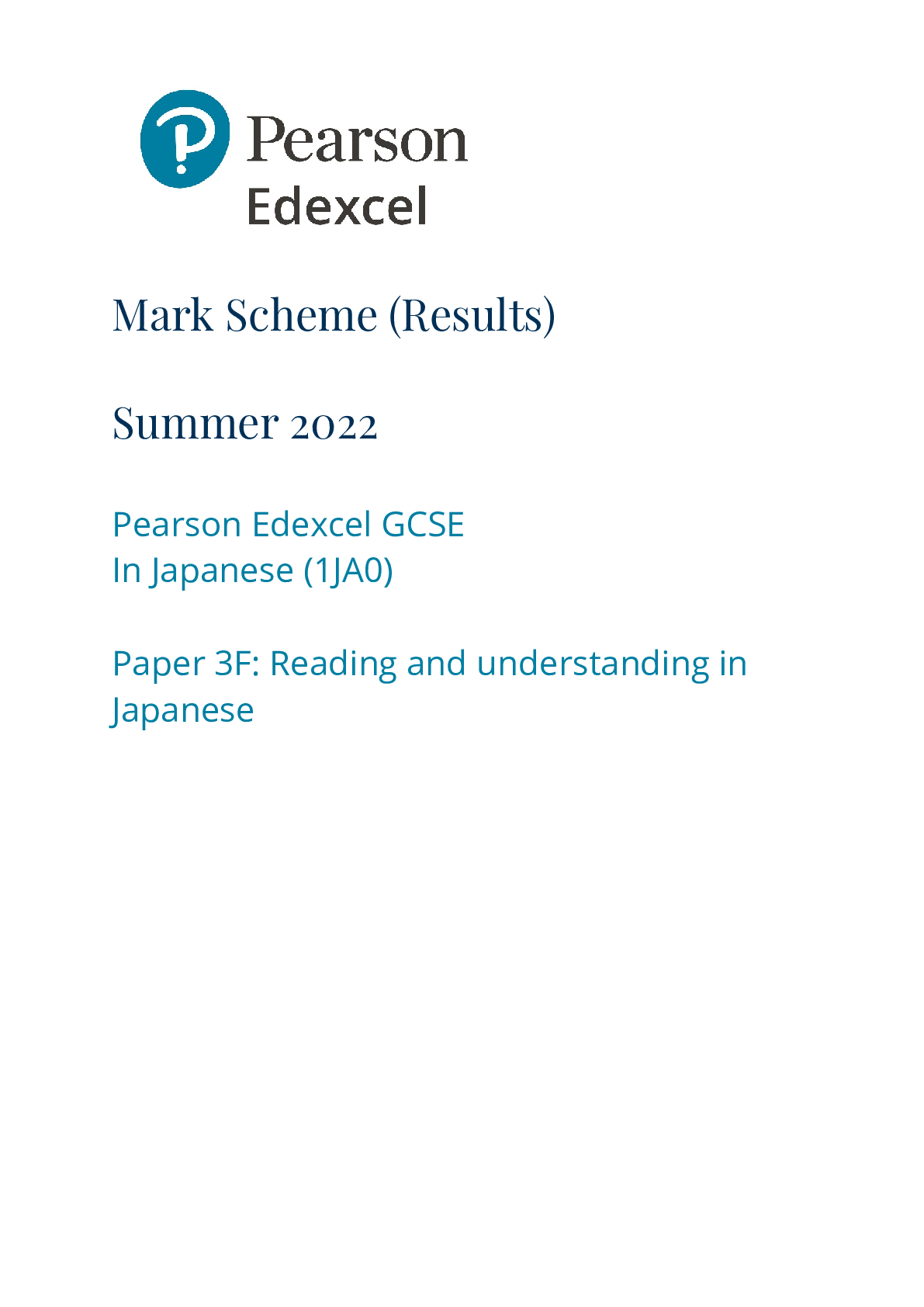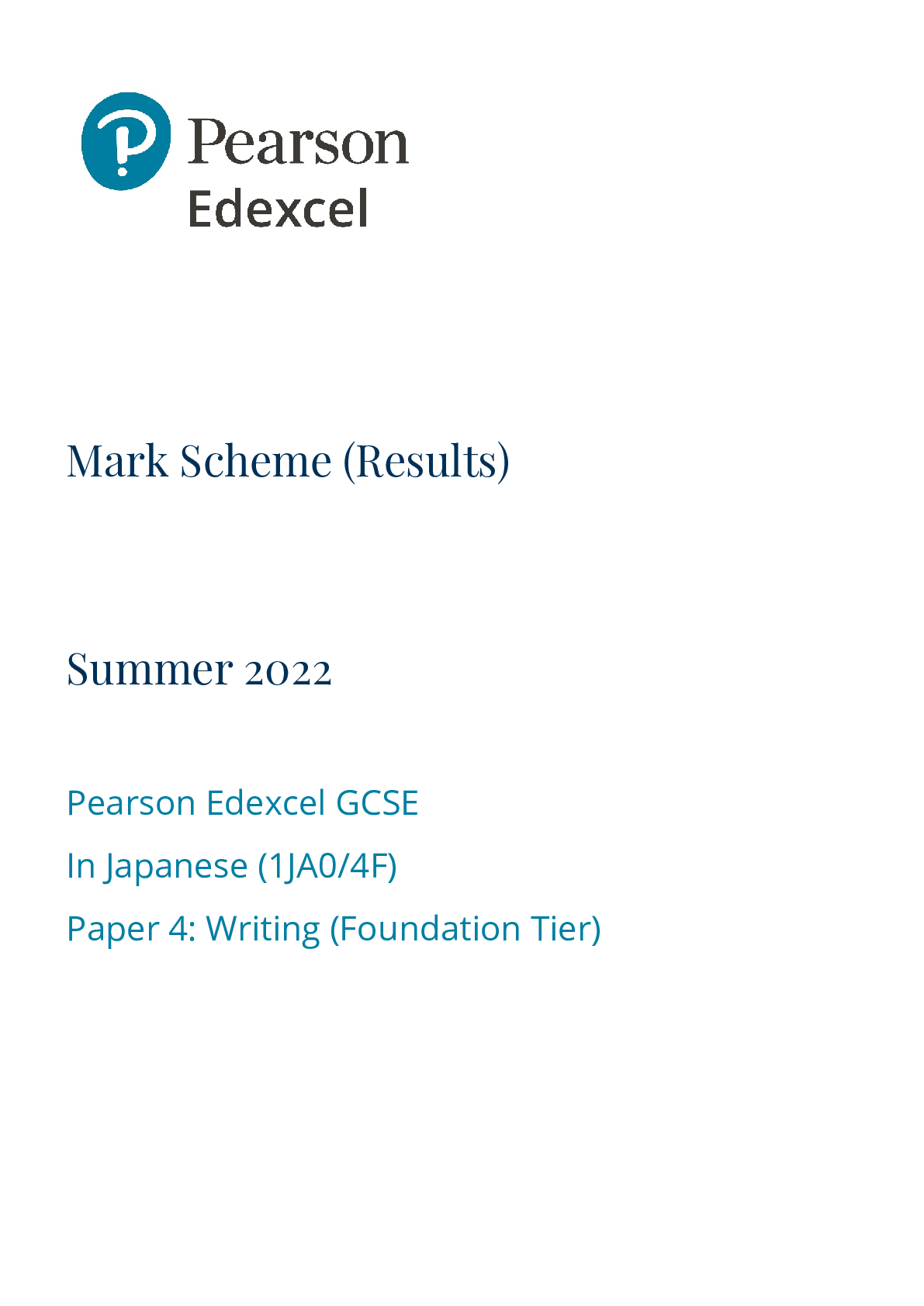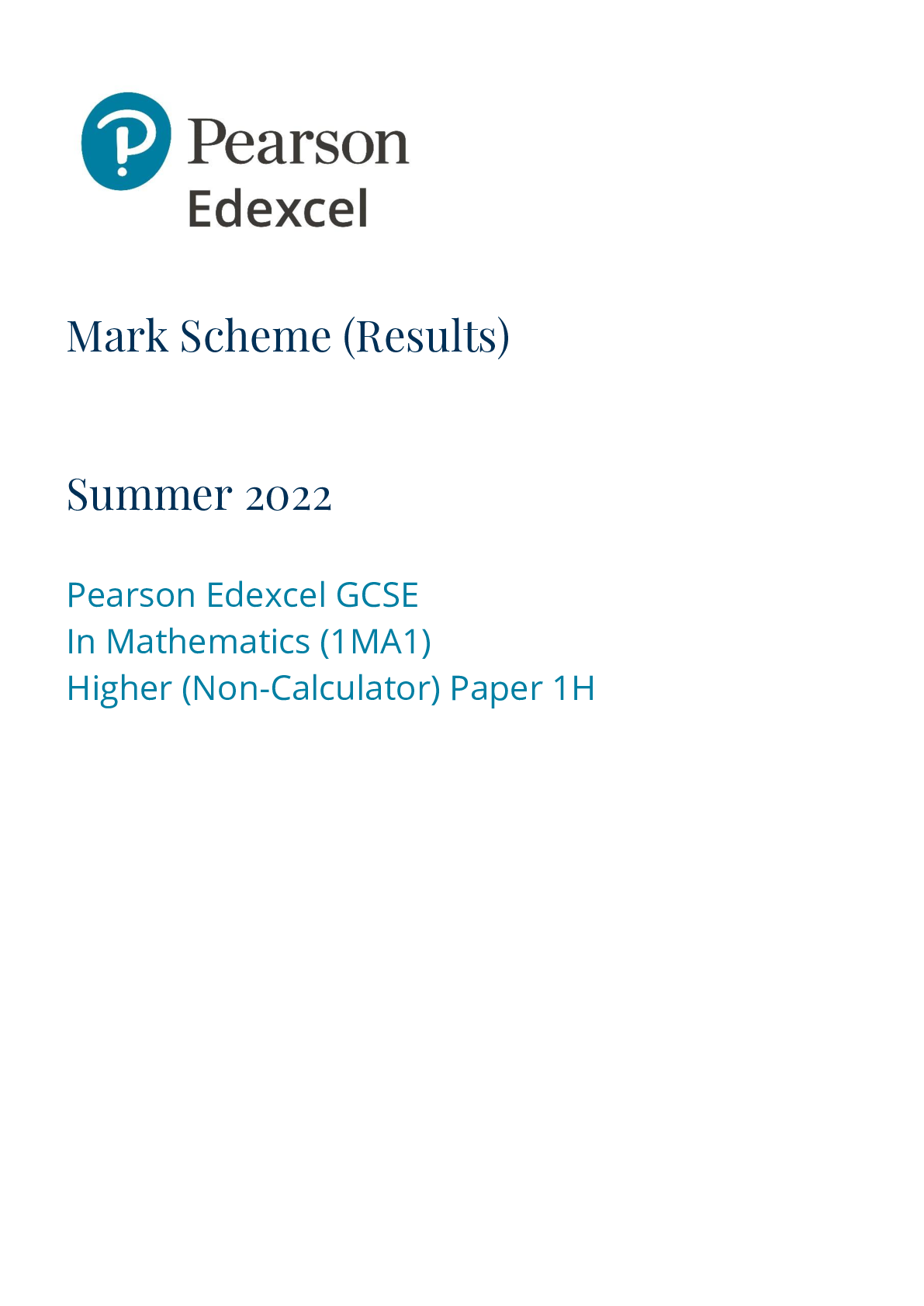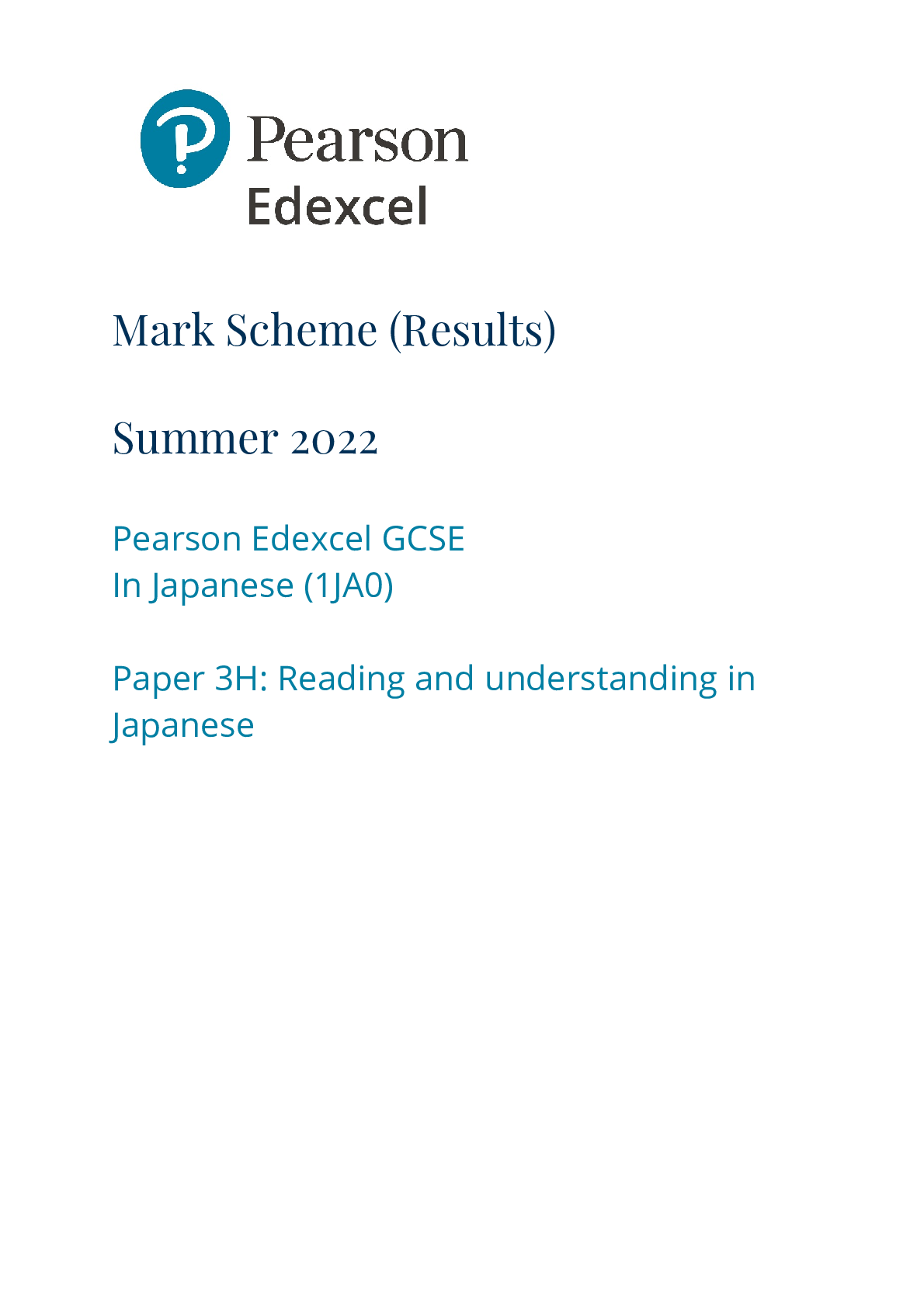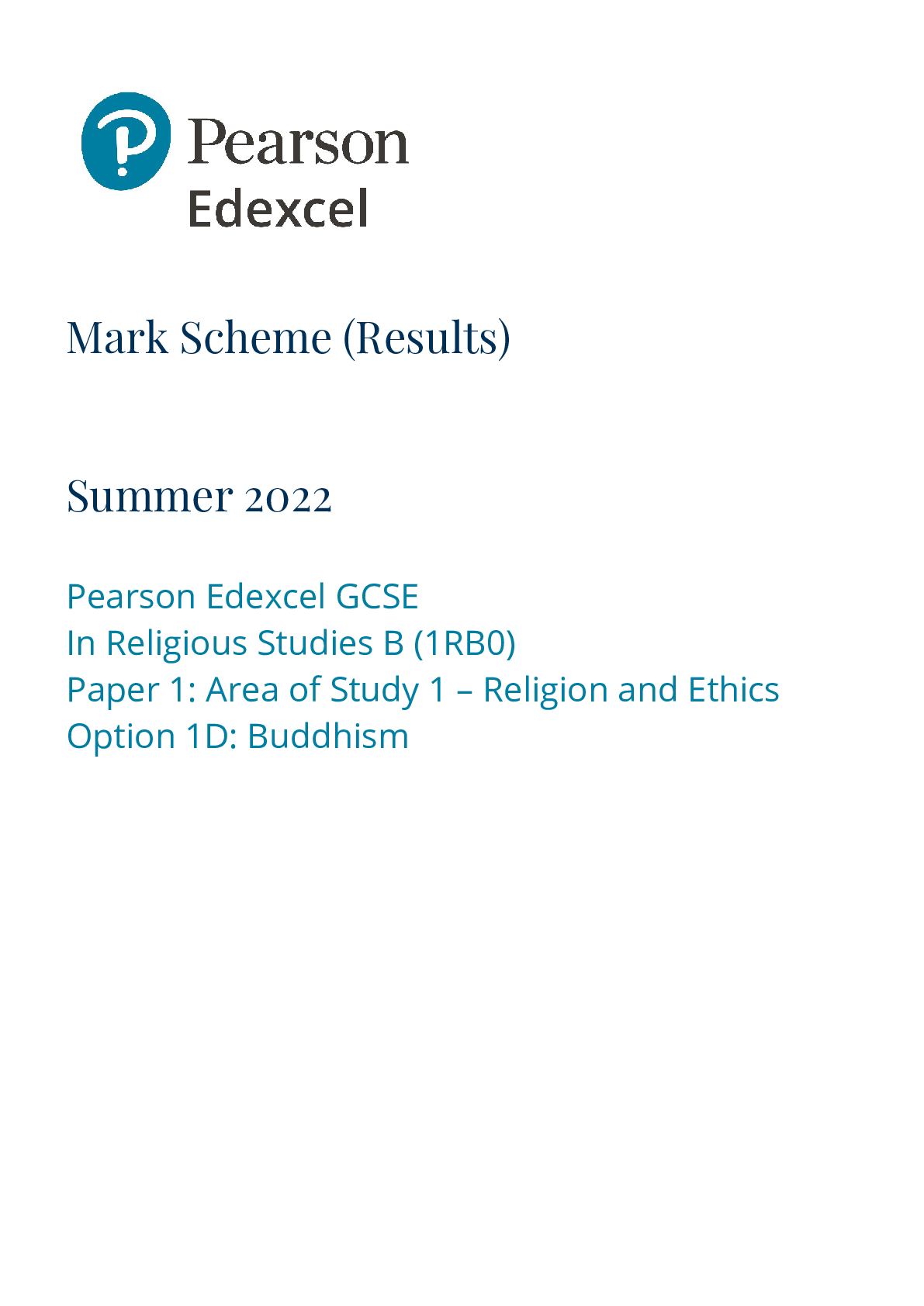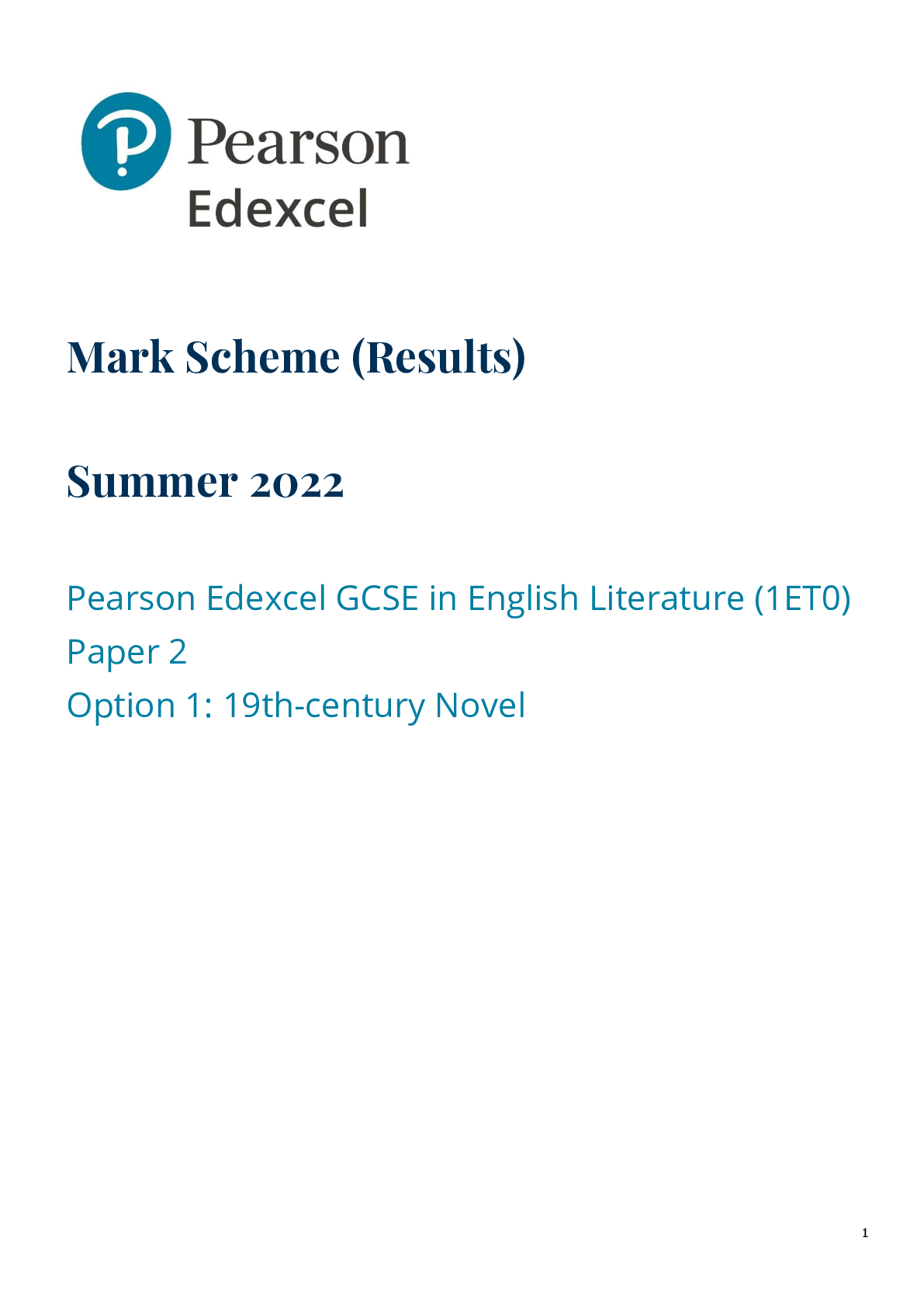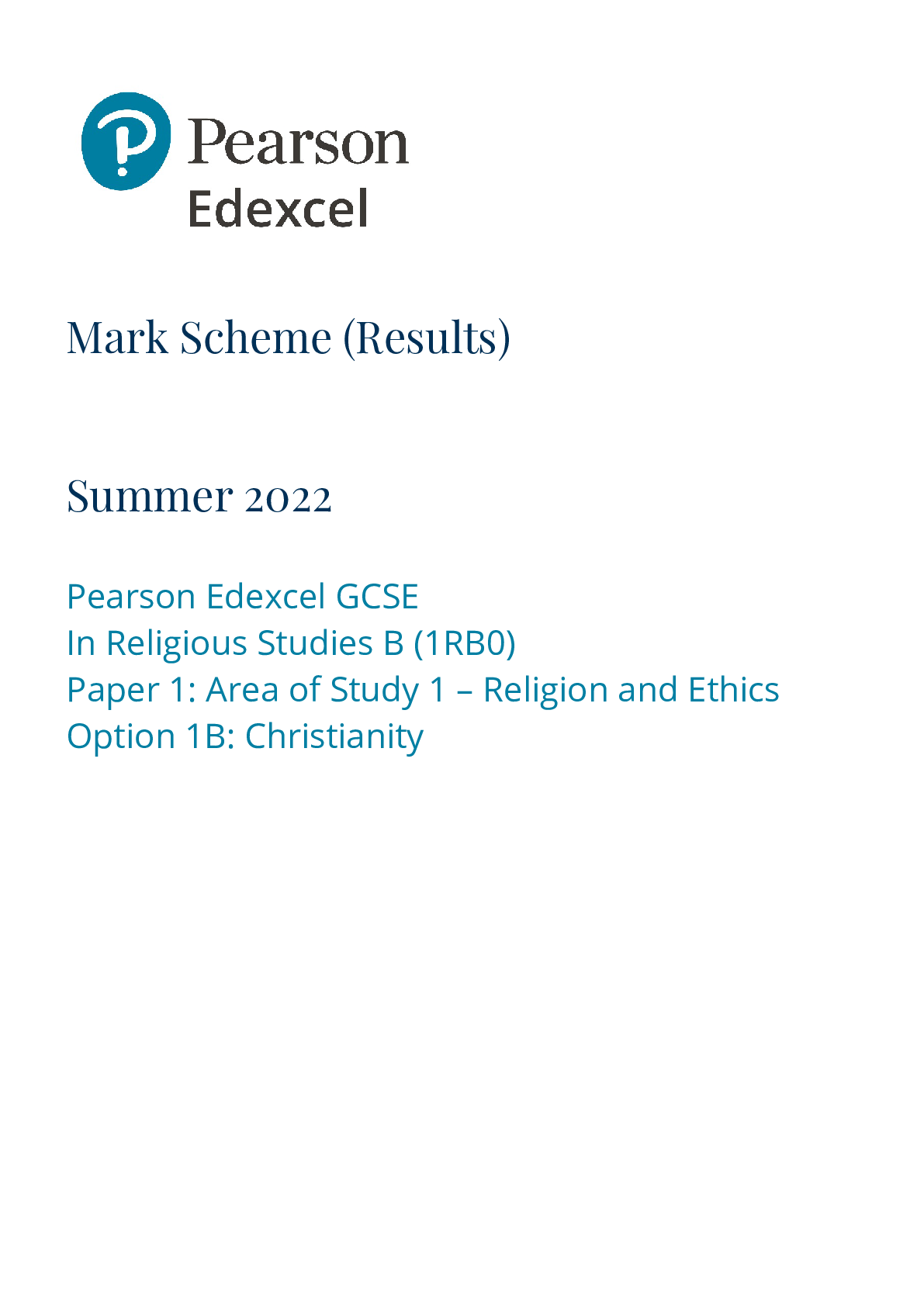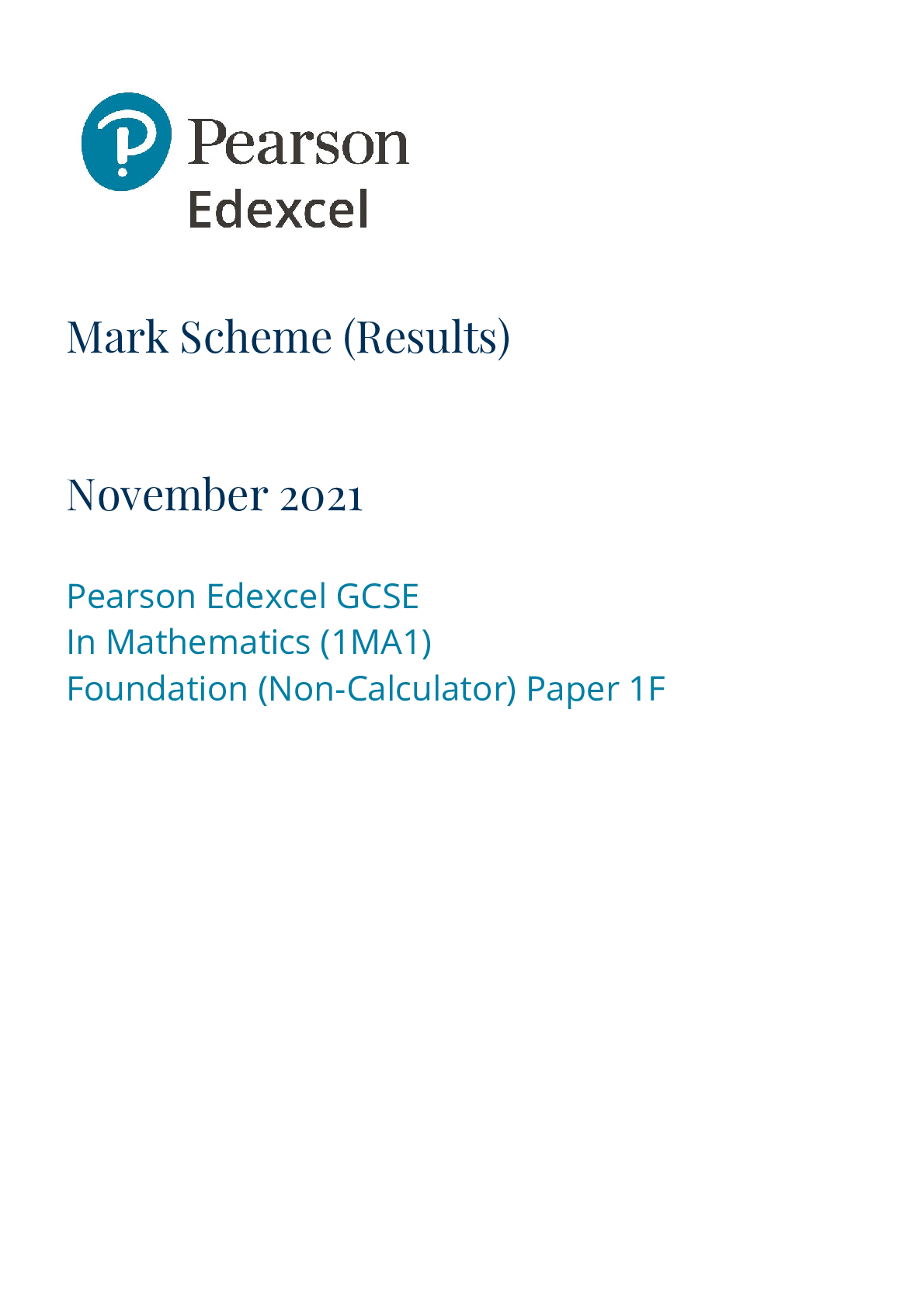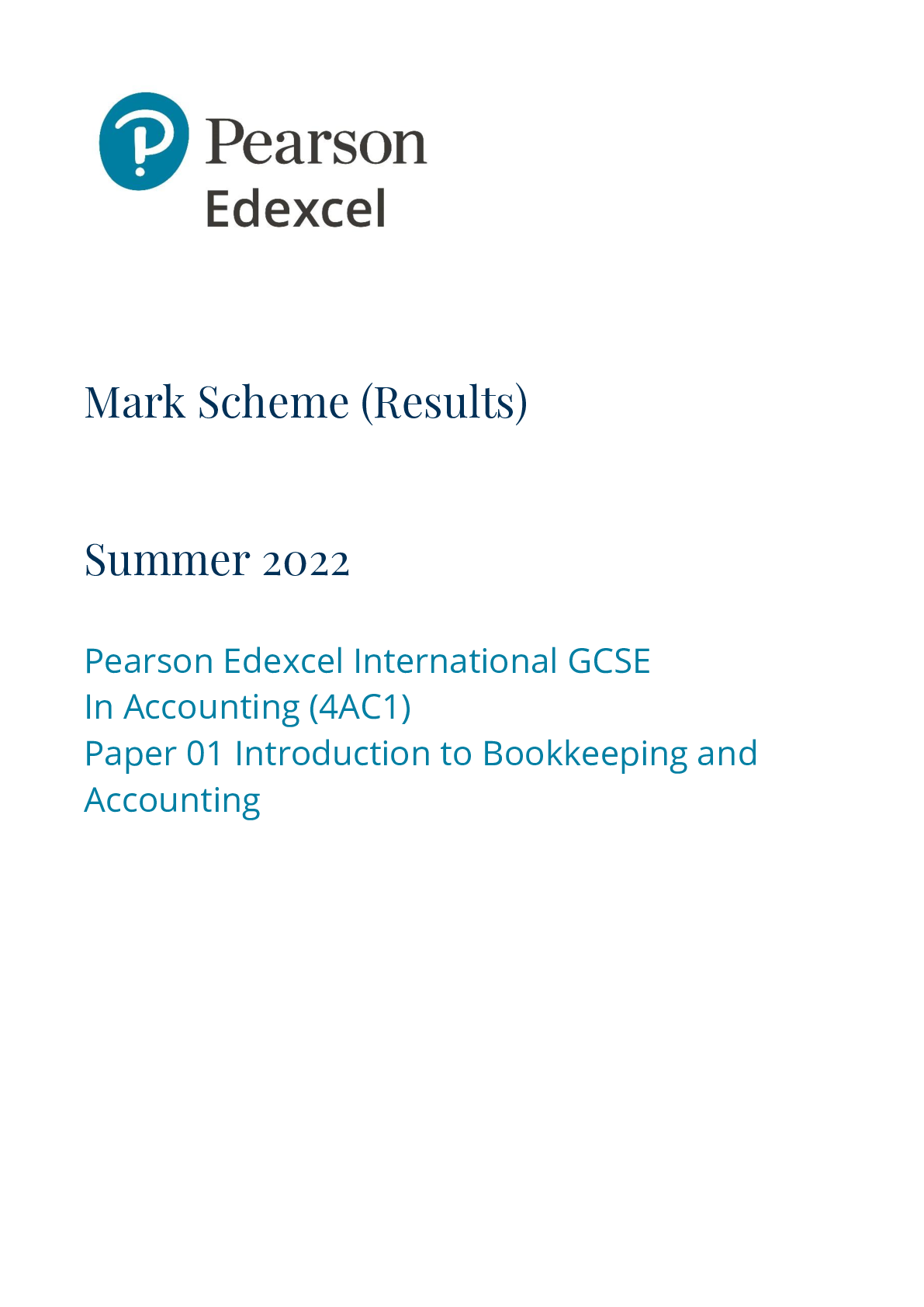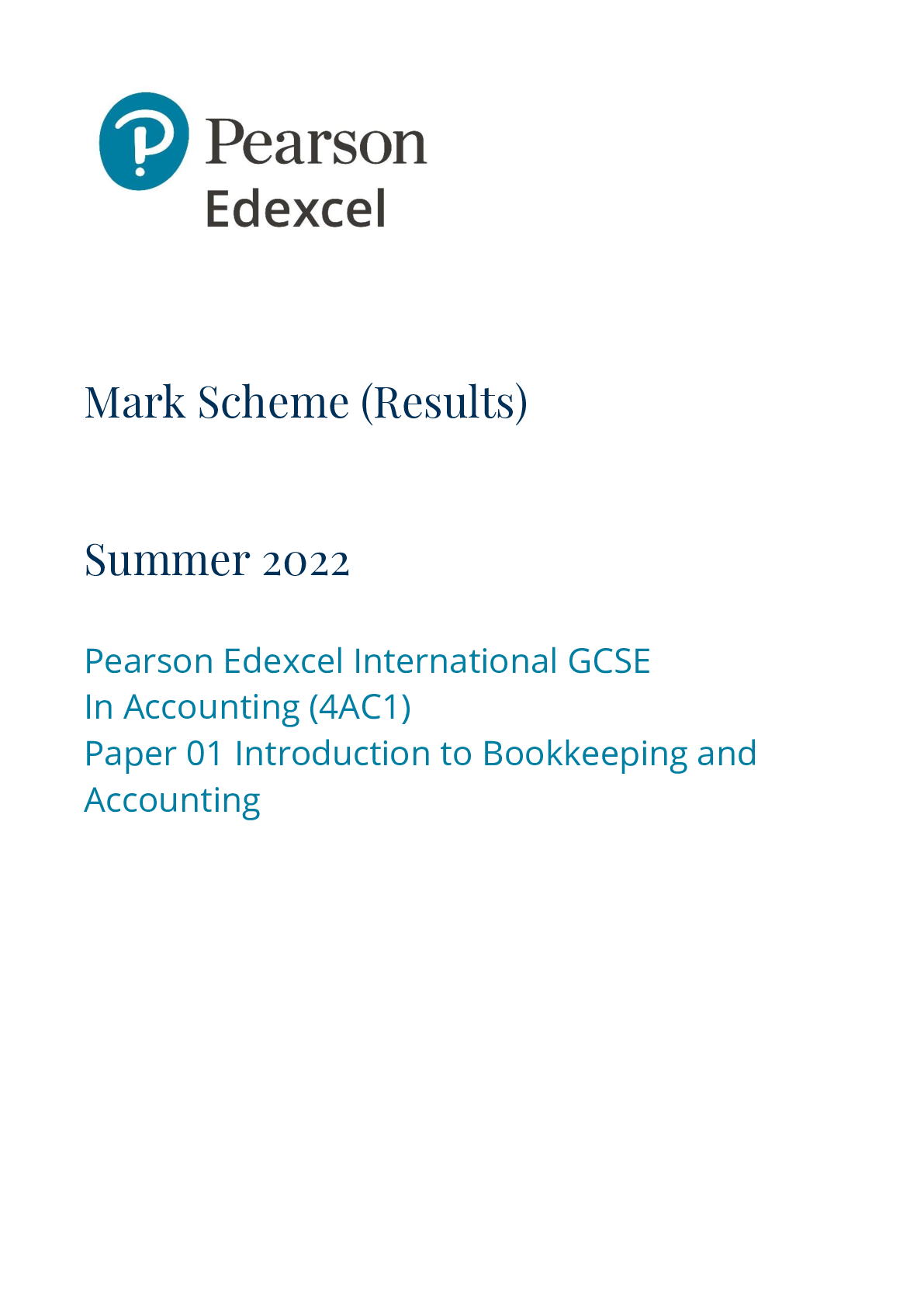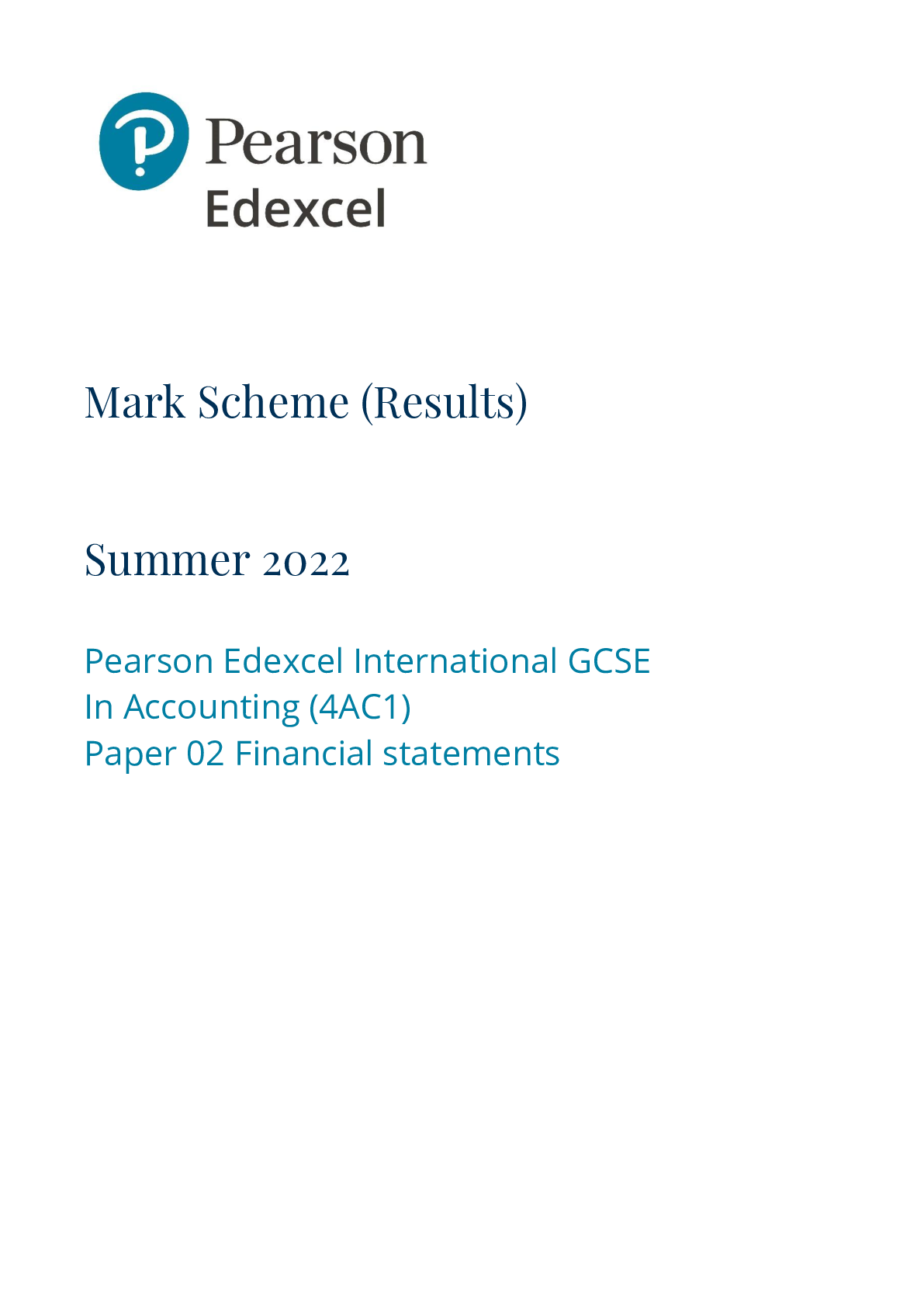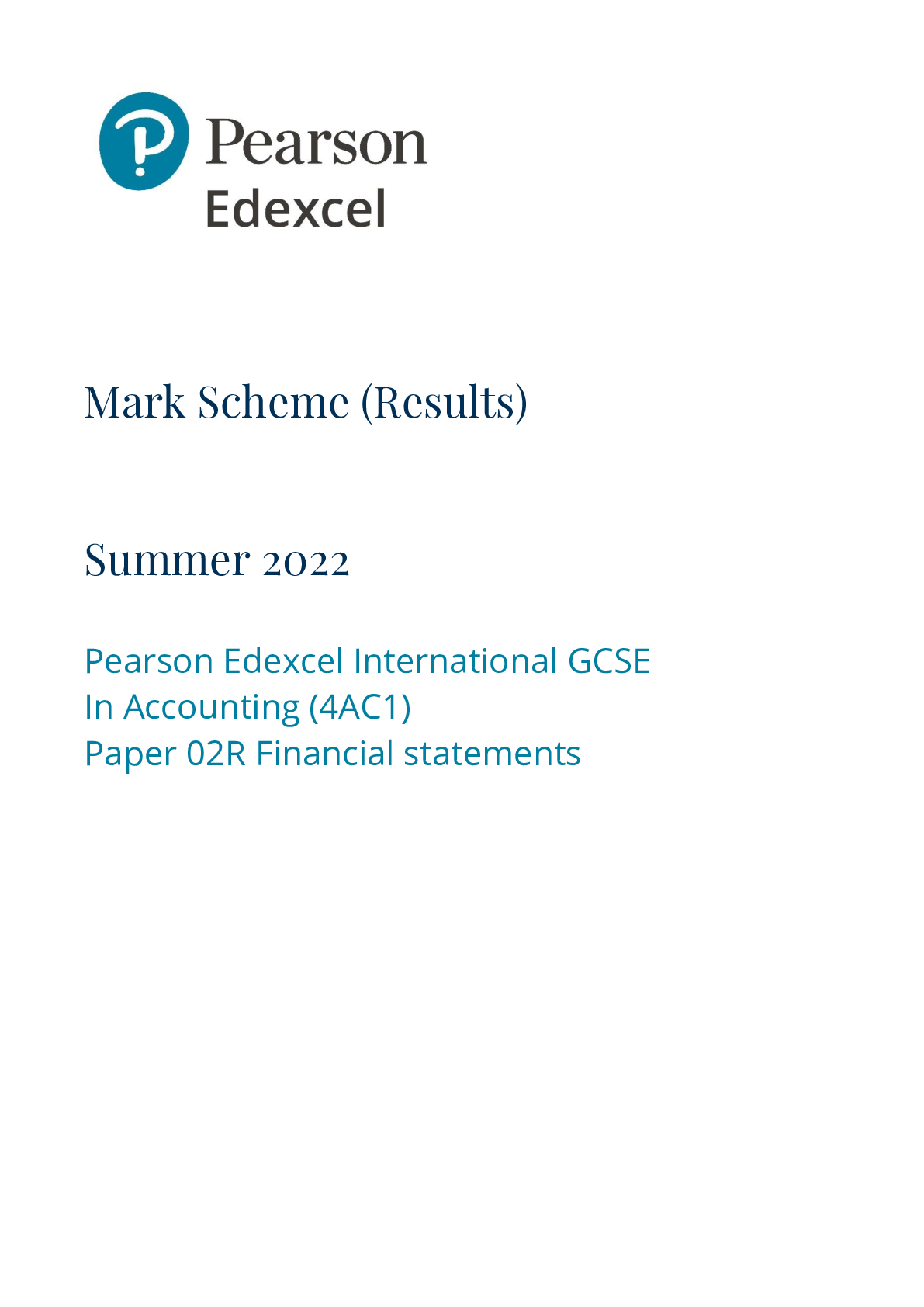Mathematics > MARK SCHEMES > Mark Scheme (Results) Summer 2022 Pearson Edexcel GCSE In Mathematics (1MA1) Foundation (Non-Calcula (All)
Mark Scheme (Results) Summer 2022 Pearson Edexcel GCSE In Mathematics (1MA1) Foundation (Non-Calculator) Paper 1F Edexcel and BTEC Qualifications
Document Content and Description Below
Mark Scheme (Results) Summer 2022 Pearson Edexcel GCSE In Mathematics (1MA1) Foundation (Non-Calculator) Paper 1F Edexcel and BTEC Qualifications Edexcel and BTEC qualifications are awarded by P... earson, the UK’s largest awarding body. We provide a wide range of qualifications including academic, vocational, occupational and specific programmes for employers. For further information visit our qualifications websites at www.edexcel.com or www.btec.co.uk. Alternatively, you can get in touch with us using the details on our contact us page at www.edexcel.com/contactus. Pearson: helping people progress, everywhere Pearson aspires to be the world’s leading learning company. Our aim is to help everyone progress in their lives through education. We believe in every kind of learning, for all kinds of people, wherever they are in the world. We’ve been involved in education for over 150 years, and by working across 70 countries, in 100 languages, we have built an international reputation for our commitment to high standards and raising achievement through innovation in education. Find out more about how we can help you and your students at: www.pearson.com/uk Summer 2022 Question Paper Log Number P66306RA Publications Code 1MA1_1F_2206_MS All the material in this publication is copyright © Pearson Education Ltd 2022 General marking guidance These notes offer general guidance, but the specific notes for examiners appertaining to individual questions take precedence. 1 All candidates must receive the same treatment. Examiners must mark the last candidate in exactly the same way as they mark the first. Where some judgement is required, mark schemes will provide the principles by which marks will be awarded; exemplification/indicative content will not be exhaustive. When examiners are in doubt regarding the application of the mark scheme to a candidate’s response, the response should be sent to review. 2 All the marks on the mark scheme are designed to be awarded; mark schemes should be applied positively. Examiners should also be prepared to award zero marks if the candidate’s response is not worthy of credit according to the mark scheme. If there is a wrong answer (or no answer) indicated on the answer line always check the working in the body of the script (and on any diagrams), and award any marks appropriate from the mark scheme. Questions where working is not required: In general, the correct answer should be given full marks. Questions that specifically require working: In general, candidates who do not show working on this type of question will get no marks – full details will be given in the mark scheme for each individual question. 3 Crossed out work This should be marked unless the candidate has replaced it with an alternative response. 4 Choice of method If there is a choice of methods shown, mark the method that leads to the answer given on the answer line. If no answer appears on the answer line, mark both methods then award the lower number of marks. 5 Incorrect method If it is clear from the working that the “correct” answer has been obtained from incorrect working, award 0 marks. Send the response to review for your Team Leader to check. 6 Follow through marks Follow through marks which involve a single stage calculation can be awarded without working as you can check the answer, but if ambiguous do not award. Follow through marks which involve more than one stage of calculation can only be awarded on sight of the relevant working, even if it appears obvious that there is only one way you could get the answer given. 7 Ignoring subsequent work It is appropriate to ignore subsequent work when the additional work does not change the answer in a way that is inappropriate for the question or its context. (eg an incorrectly cancelled fraction when the unsimplified fraction would gain full marks). It is not appropriate to ignore subsequent work when the additional work essentially makes the answer incorrect (eg. incorrect algebraic simplification). 8 Probability Probability answers must be given as a fraction, percentage or decimal. If a candidate gives a decimal equivalent to a probability, this should be written to at least 2 decimal places (unless tenths). Incorrect notation should lose the accuracy marks, but be awarded any implied method marks. If a probability fraction is given then cancelled incorrectly, ignore the incorrectly cancelled answer. 9 Linear equations Unless indicated otherwise in the mark scheme, full marks can be gained if the solution alone is given on the answer line, or otherwise unambiguously identified in working (without contradiction elsewhere). Where the correct solution only is shown substituted, but not identified as the solution, the accuracy mark is lost but any method marks can be awarded (embedded answers). 10 Range of answers Unless otherwise stated, when an answer is given as a range (eg 3.5 – 4.2) then this is inclusive of the end points (eg 3.5, 4.2) and all numbers within the range 11 Number in brackets after a calculation Where there is a number in brackets after a calculation eg 2 × 6 (=12) then the mark can be awarded either for the correct method, implied by the calculation or for the correct answer to the calculation. 12 Use of inverted commas Some numbers in the mark scheme will appear inside inverted commas eg “12” × 50 ; the number in inverted commas cannot be any number – it must come from a correct method or process but the candidate may make an arithmetic error in their working. 13 Word in square brackets Where a word is used in square brackets eg [area] × 1.5 : the value used for [area] does not have to come from a correct method or process but is the value that the candidate believes is the area. If there are any constraints on the value that can be used, details will be given in the mark scheme. 14 Misread If a candidate misreads a number from the question. eg uses 252 instead of 255; method or process marks may be awarded provided the question has not been simplified. Examiners should send any instance of a suspected misread to review. Guidance on the use of abbreviations within this mark scheme M method mark awarded for a correct method or partial method P process mark awarded for a correct process as part of a problem solving question A accuracy mark (awarded after a correct method or process; if no method or process is seen then full marks for the question are implied but see individual mark schemes for more details) C communication mark awarded for a fully correct statement(s) with no contradiction or ambiguity B unconditional accuracy mark (no method needed) oe or equivalent cao correct answer only ft follow through (when appropriate as per mark scheme) sc special case dep dependent (on a previous mark) indep independent awrt answer which rounds to isw ignore subsequent working Paper: 1MA1/1F Question Answer Mark Mark scheme Additional guidance 1 400 B1 cao 2 4e B1 for 4e oe e 4 gets no marks, where the 4 is clearly a power 3 Reflection shown B1 cao 4 6000 B1 for 6000 oe Accept six (6) thousand(s) or just thousand(s) 5 45%, 1 2 , 0.55 B1 Accept equivalent notation eg 45 100 , 50 100 , 55 100 or 45%, 50%, 55% or 0.45, 0.5, 0.55 or a combination of notation Do NOT accept reverse order 6 8 B1 cao 7 7 P1 P1 A1 for 20 ̶ 6 (= 14) or 20 ÷ 2 (=10) and 6 ÷ 2 (=3) for “14” ÷ 2 (= 7) or “10” ̶ “3” (= 7) cao May be seen as a build-up method or by a method of repeated subtraction, listing multiples of 2 Paper: 1MA1/1F Question Answer Mark Mark scheme Additional guidance 8 (a) Completed bar chart B2 (B1 for a fully correct bar chart for one bar correct eg May plotted at 35 or June plotted at 20 OR May plotted at 20 and June plotted at 35) Condone bars of unequal width Condone no gaps or inconsistent gaps (b) Explanation C1 Acceptable examples Half a square is worth 2.5 (not 0.5) It goes to 17.5 Halfway between 15 and 20 is not 15.5 It is between 17 and 18 It could/would be 17 or 18 It goes up in 5s (not 1s) Not acceptable examples The bar is in the middle It could/would be 16 (or 19 or 15.6) You can’t have half a cm of rain The answer would be a whole number 9 (a) Shape drawn B1 cao (b) 9 and 11 B1 cao Ignore any subsequent values 10 27 M1 for –15 + 42 (=27) oe SC: B1 for answer of 26 if M0 scored A1 cao Paper: 1MA1/1F Question Answer Mark Mark scheme Additional guidance 11 £73.60 or 7360p M1 for 89198 – 88738 (= 460) OR for showing 89198 × 16 or 88738 × 16 OR for showing (89198 + 88738) × 16 May see 0.16 used 89198 × 16 = 1427168 88738 × 16 = 1419808 (89198 + 88738) × 16 = 2846976 M1 for showing “460” × 16 OR for showing 89198 × 16 – 88738 × 16 M1 (dep on M1) for a complete method of multiplication with relative place value correct including an intention to add all the appropriate elements of the calculation eg, 2 lines of the 1st method, internal numbers of grids, or complete structure shown of partitioning methods. Accept in any units, correct figures would imply previous mark 4600 2760 7360 4 6 0 0 0 0 4 6 0 2 3 0 4 6 0 3 6 0 400 60 10 4000 600 6 2400 360 4000+2400+600+360 A1 for £73.6(0) or 7360p SC B3 for an answer with digits 736 with incorrect or missing units 0 7 1 6 Paper: 1MA1/1F Question Answer Mark Mark scheme Additional guidance 12 (a) 7 12 M1 for finding two fractions with a correct common denominator, with at least one correct corresponding numerator, eg. 5 12 , 2 12 A1 for 7 12 oe eg 14 24 , 21 36 , 28 48 , 35 60 , 42 72 , ……. Ignore errors in cancelling following sight of an equivalent fraction to 7 12 (b) 3 16 M1 for method to multiply fractions, eg 3×5 10×8 (= 15 80 ) or simplifies the calculation eg 3 2 × 1 8 or for an answer equivalent to 3 16 unsimplified A1 cao 13 (a) 4 15 B1 oe 4 : 15 gets B0 (b) 0.7 B1 for 0.7 oe or 7 10 oe or 70% 14 19 M1 for a correct substitution, eg (y =) 6 × 4 – 5 A1 cao 15 (a) 180 M1 rounds one figure appropriately 92 to 90 or 100 or 1.63 to 2 or 1.5 or 1.6 or 1.7 A1 for 180 (= 90×2) or 135 (= 90×1.5) or 144 (= 90×1.6) or 153 (= 90 × 1.7) or 200 (= 100×2) or 150 (= 100×1.5) or 160 (= 100×1.6) or 170 (= 100 × 1.7) or 163 (= 100×1.63) or 184 (= 92 × 2) or 138 (= 92 × 1.5) or 147.2 (= 92 × 1.6) or 156.4 (= 92 × 1.7) Answer of 149.96 (92 × 1.63) gets M0A0 Answer with no working gets M0A0 Ignore further rounding of their result (b) 947.2 B1 cao Paper: 1MA1/1F Question Answer Mark Mark scheme Additional guidance 16 (a) (0)8 45 P1 for 50 ÷ 40 (= 1.25) oe or (time =) (0)8 30 (after travelling for) 40 miles P1 for a process to convert their time to minutes or hours and minutes, eg “1.25” × 60 (= 75 mins = 1 hr 15 mins) or for 10 40 × 60 (= 15 mins) May be seen as a build-up method and may state 1 hour 15 mins A1 for (0)8 45 oe SC: B2 for answer of (0)8 55 (= 7.30 + 1.25) (b) Explanation C1 Acceptable examples It will be earlier Time will be reduced He will get there quicker/faster He will arrive at a different time The journey will be shorter so he will arrive earlier Not acceptable examples He will arrive later The time will increase Explanations must be unambiguous Paper: 1MA1/1F Question Answer Mark Mark scheme Additional guidance 17 (a) Frequency diagram See end of m/s C3 (C2 (C1 for a fully correct frequency diagram for at least 5 correct values in the frequency diagram) for at least 3 correct values in the frequency diagram) If probabilities used instead of frequencies then maximum of C2 can be awarded (b) 12 72 M1 for ? 72 where 0 < a < 72 and a is an integer or 12 ? where b > 12 and b is an integer or 12 : 72 or ft their values for 72 and/or 12 from (a) A1 for 12 72 oe or ft (a) Accept equivalent decimal or percentage for [Show More]
Last updated: 2 years ago
Preview 1 out of 24 pages
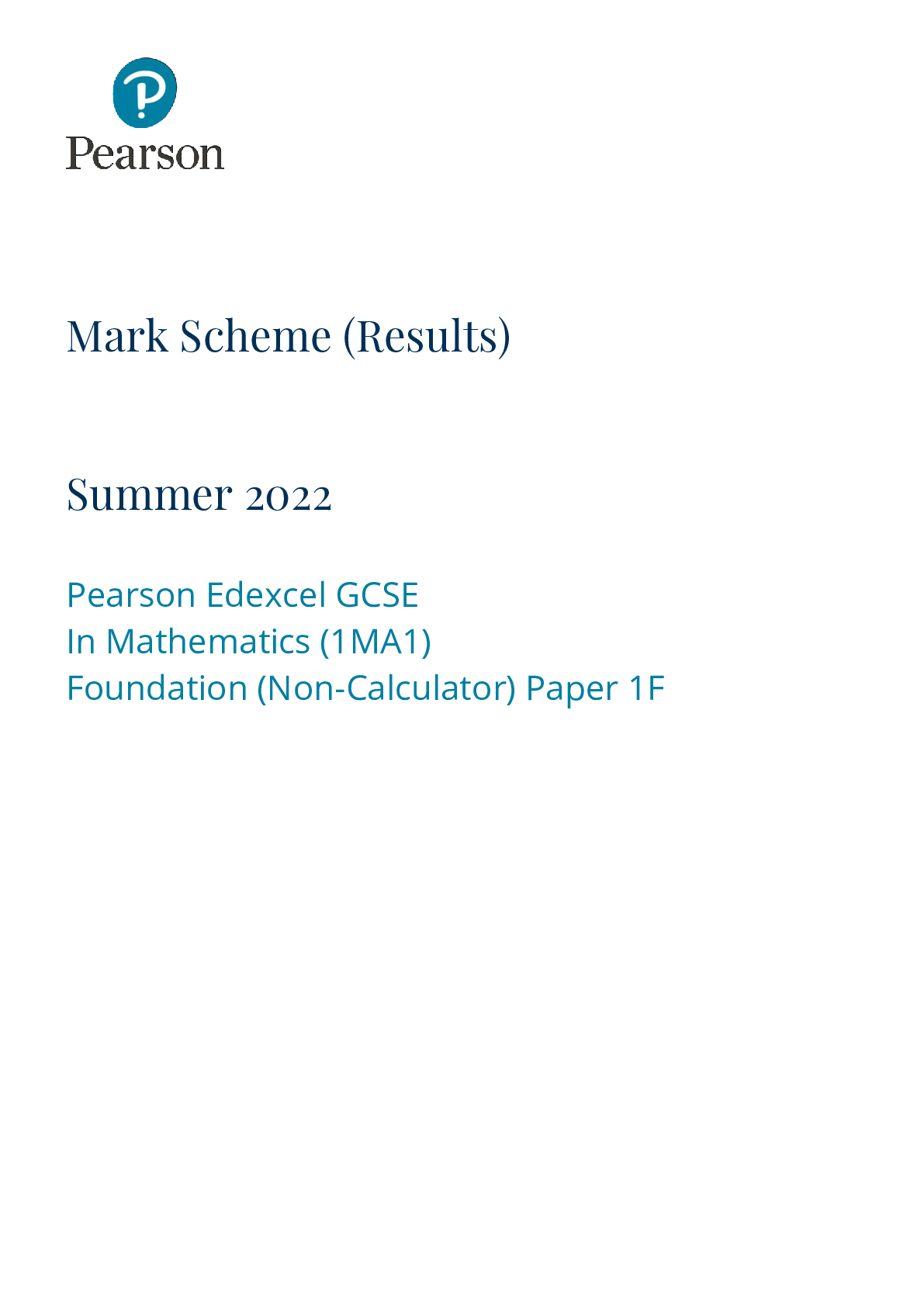
Buy this document to get the full access instantly
Instant Download Access after purchase
Buy NowInstant download
We Accept:

Reviews( 0 )
$8.00
Can't find what you want? Try our AI powered Search
Document information
Connected school, study & course
About the document
Uploaded On
Apr 04, 2023
Number of pages
24
Written in
Additional information
This document has been written for:
Uploaded
Apr 04, 2023
Downloads
0
Views
201

